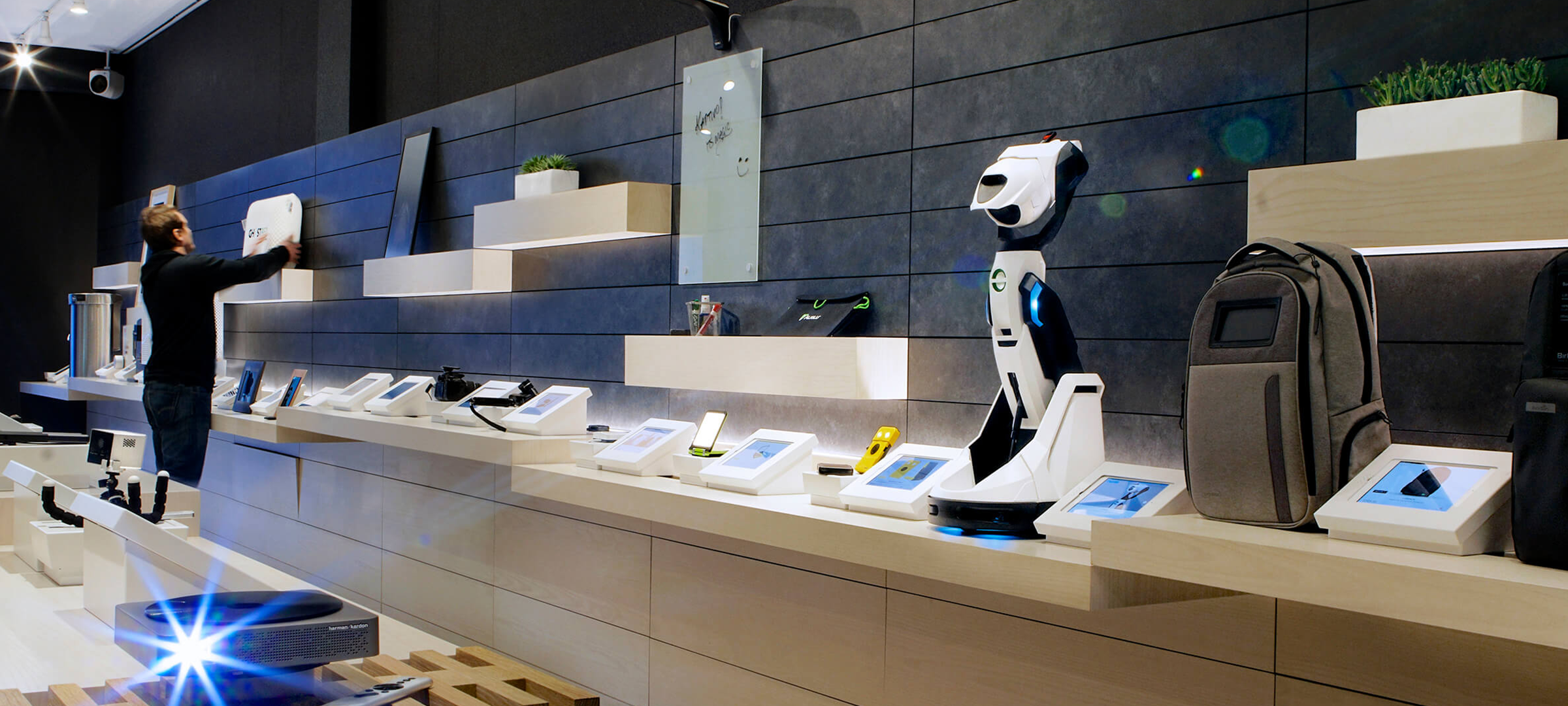Story, B8ta and Showfields are just some of the companies making it possible for digital retailers to interact with their consumers in a more meaningful, less transactional way. The concept comes from the idea that as customer expectations shift, consumers are looking to feel something when they interact with a brand. Experience, emotion and connection are the driving forces; online shopping may have increased convenience, but it’s decimated the pleasure factor. To remain competitive, online retailers are looking at ways of extending their brand identity, of reaching new audiences and of providing a service that Amazon (currently) doesn’t.
What is Retail as a Service?
RAAS is the reinvention of the traditional department store; where multiple retailers promote their products in the same shared space. The difference is that rather than a focus on stock management and the hard-sell, these stores are all about the immersive brand experience. There are fewer products on the shelves but there’s beefed up retail storytelling and the staff are more ‘actor’ than ‘assistant’. Being able to tell a story that resonates with your brand and delights your customers is one of the new ways that companies who have grown up online can start to scale. These are retailers who have reached the limits of their growth via purely digital means, they are looking for ways to shift their business model into the physical space without the overheads that setting up a store would traditionally incur.
Who is Benefiting from the Retail as a Service Approach?
It’s not just D2C retailers who are benefiting from this new approach. Manufacturers are also taking advantage of the customer insights that they can gain from a six month residency. By dealing directly with their customers for the first time, manufactures can see how consumers interact with their products and what pain-points they might be experiencing. Those data points then enable them to go away and improve the products in response; those are opportunities that they might not have been able to take advantage of before.
The rationale for developing physical spaces for online companies comes from the very real consumer need to ‘touch, taste and feel’. Consumer behaviour studies show that customers combine on and offline behaviours before making purchase decisions; from researching customer reviews to usage instructions or price comparisons, there is almost always a fusing of both worlds. That means that they have to cater to both requirements and offer a fully omni-channel and seamless experience.
The Retail as a Service Platform
The platform that companies like Showfields and B8ta are offering is perfectly positioned to enable the brands to focus entirely on connecting with their customers. In creating space for immersive and meaningful experiences, they scale back on time formerly spent on distractions of stock management or scheduling systems.
For the Instagram retailers who have appeared in their droves over the last couple of years, these ‘pop up’ type spaces provide a platform from which to increase brand loyalty and translate their commerce advance into the physical world.
The Role of the Store Assistant
For store assistants, their roles have gone from useful to essential; they will need to be enabled in every possible way to deliver on the right brand message. Digital tools can give them the information they need at their fingertips, and clever payment solutions can remove even the most simple of pain points.
RAAS is opening up an exciting range of possibilities across retail; from how online retailers build new relationships with their customers, to the value that we put on experience over products. The uniting factor across all of these innovations, is that they are connecting with the consumer on a human level. Beyond the data points and customer segmentations, they are making the consumer feel something. For brands to remain competitive in the coming years, tapping into what makes us human, will be essential.








